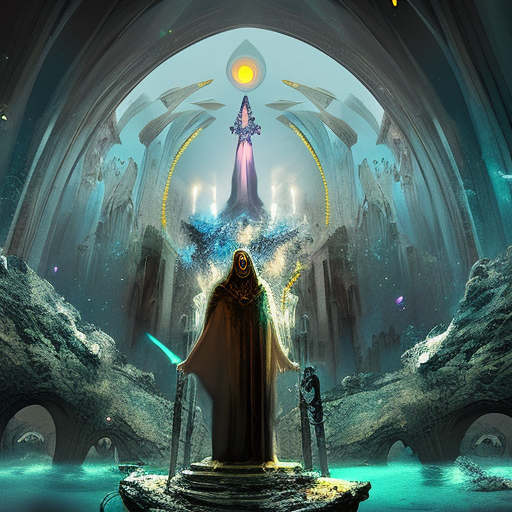The Divine Comedy: A Journey through Hell, Purgatory, and Heaven
Dante Alighieri’s epic poem, The Divine Comedy, takes readers on a captivating journey through the realms of Hell, Purgatory, and Heaven. Filled with vivid imagery, profound symbolism, and moral lessons, this timeless masterpiece explores the depths of human sin, the power of redemption, and the ultimate quest for salvation.
The Inferno: Descending into the Abyss
In the first part of The Divine Comedy, titled The Inferno, Dante finds himself lost in a dark forest, symbolizing his spiritual confusion and moral crisis. Suddenly, the spirit of the ancient Roman poet Virgil appears and offers to guide him through the realms of the afterlife. Together, they embark on a descent into Hell, where they encounter various sinners and witness the gruesome punishments that await them.
As Dante and Virgil journey through the nine circles of Hell, they encounter infamous historical figures, mythological creatures, and individuals from Dante’s own life. Each circle represents a different sin, ranging from lust and gluttony to greed and treachery. Through these encounters, Dante explores the consequences of human actions and the eternal justice that awaits those who succumb to sin.
The Purgatorio: Climbing towards Redemption
After traversing Hell, Dante and Virgil emerge on the shores of Purgatory, the second part of The Divine Comedy. Here, souls undergo purification and penance, striving to rid themselves of their earthly sins and ascend to Heaven. Guided by the Roman poet Statius, Dante witnesses the arduous journey of the repentant souls as they climb the seven terraces of Purgatory.
Each terrace of Purgatory represents a different sin, and the souls endure various trials and tribulations to cleanse themselves. Through their encounters with these penitents, Dante learns the importance of self-reflection, humility, and the transformative power of forgiveness. The journey through Purgatory serves as a reminder that redemption is possible for those who seek it.
The Paradiso: Ascending to Heavenly Bliss
In the final part of The Divine Comedy, the Paradiso, Dante is guided by Beatrice, his beloved and a symbol of divine grace. As they ascend through the celestial spheres, Dante experiences the beauty and splendor of Heaven, encountering angels, saints, and the divine presence of God himself.
In each sphere, Dante encounters souls who have achieved various levels of spiritual enlightenment. Through their conversations, he gains insight into the nature of God, the harmony of the universe, and the ultimate purpose of human existence. The Paradiso is a celebration of divine love, wisdom, and the eternal bliss that awaits those who attain union with God.
Key Takeaways:
- The Divine Comedy is a profound exploration of the human condition, delving into themes of sin, redemption, and the quest for salvation.
- The journey through Hell, Purgatory, and Heaven serves as a moral lesson, highlighting the consequences of human actions and the transformative power of repentance.
- Dante’s vivid imagery and symbolism bring the afterlife to life, immersing readers in a rich tapestry of allegory and metaphor.
- The Divine Comedy is not only a religious allegory but also a reflection of Dante’s own political and personal beliefs.
- Through his encounters with various souls, Dante learns the importance of self-reflection, humility, and the pursuit of divine love.
“In the middle of the journey of our life, I found myself in a dark wood, for the straight way was lost.” – Dante Alighieri
In The Divine Comedy, Dante takes readers on a transformative journey through the realms of Hell, Purgatory, and Heaven. Through his encounters with sinners, penitents, and enlightened souls, Dante explores the depths of human nature and the ultimate quest for spiritual enlightenment. This epic poem serves as a timeless reminder of the power of redemption, the consequences of our actions, and the eternal hope for salvation.












